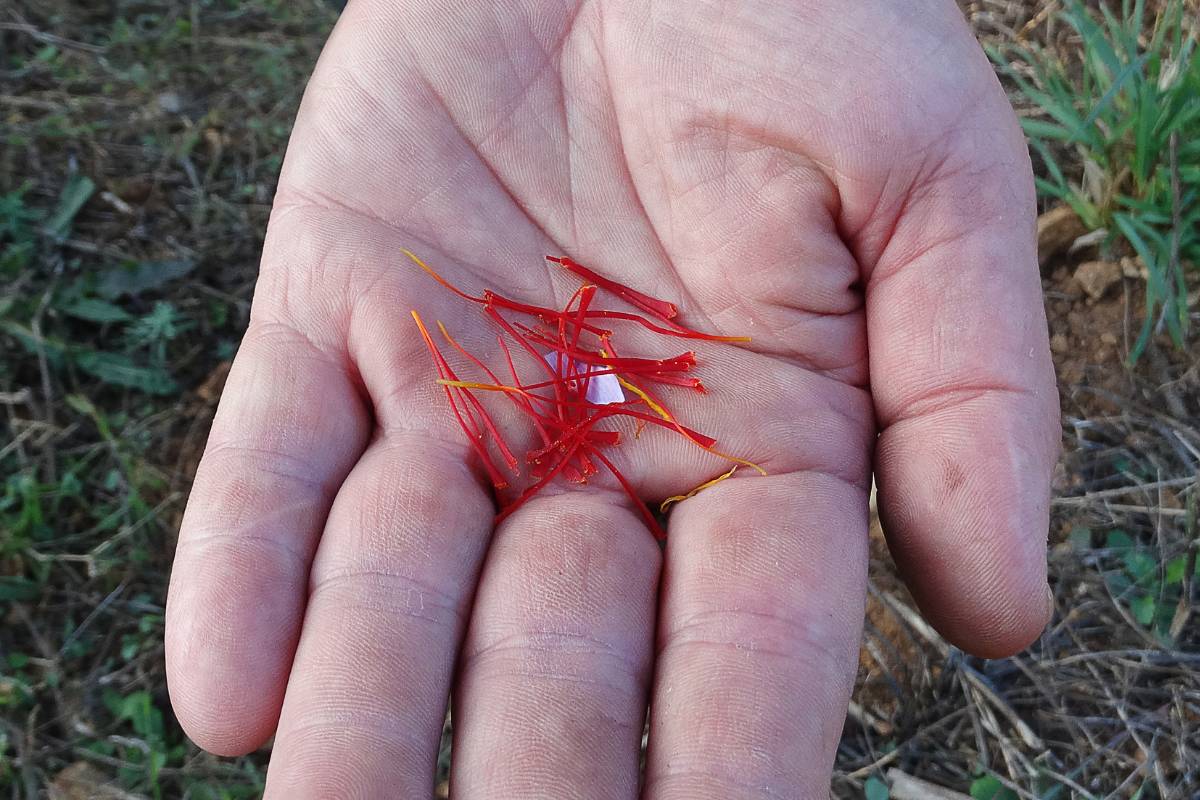Saffron, long used in Mediterranean and Indian cultures, imparts a distinctive colour and exquisite earthy flavour to a variety of culinary delights. Made from the stigmas of a particular species of crocus flower, saffron is often said to be the most expensive spice on the planet due to the time and labour involved in growing and harvesting it.
It takes around 170 saffron crocus flowers to produce just one gram of saffron. Luckily for home gardeners, only a few flowers are needed to produce enough saffron to try in a dish or two, because the colour and flavour are highly concentrated. In this guide, we'll explore the steps to successfully grow saffron crocus corms, and learn how to harvest and dry the flowers’ brilliant red stigmas.
Growing Saffron Crocus
Crocus (Crocus sativus) is a perennial bulb that thrives in a climate with cold winters, making it ideal for arid, temperate and cold climates, especially those that experience regular frosts. Unfortunately for gardeners in subtropical and tropical climates, bulbs are unlikely to flower in warm climates.
Preparation
Choose a permanent, sunny location with at least 6 hours of full sun each day. Ensure soil is loose and well drained, and dig in some organic matter a couple of weeks before planting the corms. Keep the soil weed-free until planting.
Crocus can also be grown in containers with a volume of at least 20 litres. Use fresh potting mix supplemented with a slow-release fertiliser.
Planting the Corms
Plant the corms in late summer or early autumn for flowering in late autumn. Space individual corms 10cm to 15cm apart and plant them 10cm deep with the pointed tip facing upwards. Water in well after planting, and keep the soil moist but not wet until shoots emerge.
Cultivation
Once the leaves emerge, water the plants when the soil is dry about 5cm below the surface. Crocus aren’t bothered by many pests and diseases, but keep an eye out for slugs and snails, which sometimes take a liking to the new shoots.
After flowering, fertilise plants with blood and bone or pelletised chicken manure and allow the foliage to die down naturally. This helps the bulb absorb nutrients for the following growing season. Once the foliage has died down, cut the leaves off at ground level. Crocus corms can remain in the ground for several years without lifting. Mulch heavily with lucerne or pea straw in summer to protect them from hot temperatures.
Harvesting and Drying Saffron
The parts of the flower that are used as saffron are the three bright red stigmas, also called threads. These can be removed in situ, leaving the flowers for your enjoyment, or whole flowers can be harvested and then the stigmas detached. As crocus flowers bloom very close to soil level, the latter option is preferred by most gardeners.
If harvesting whole flowers, pick them early in the morning just as they open. Peel back the petals and remove the three red stigmas by pinching them off at the base using your fingers or a pair of tweezers.
The threads can be used fresh but are more commonly dried for future use. Use a dehydrator on low setting or gently heat the threads in the oven at 75°C for a short time. Alternatively, air dry the threads on a paper towel for three to five days. Store the dried threads in an airtight jar or container in a dark place for 12 months or more.
Cooking with Saffron
Given saffron’s expense and the small harvest likely from home gardens, it’s fortunate that a little saffron goes a long way in the kitchen. Saffron is a key ingredient in iconic Mediterranean dishes like Spanish paella and Provencal bouillabaisse (fish stew). In Indian cooking, saffron adds an earthy flavour to curries and the distinctive orange-yellow colour to saffron rice. Saffron can also be used in risotto, tagines, and even tea and cocktails.
Dried saffron threads are usually soaked in one to two tablespoons of water for around 30 minutes prior to use. This helps to distribute the colour and earthy flavour evenly when it's added to a recipe. The threads can be added to dishes along with the water, or strained off and just the infused water used, depending on your preference. Don’t overdo it or an underlying bitter flavour will overpower the more earthy, floral notes of the spice.
Easily attainable with a little care and attention, cultivating saffron is a rewarding venture. So why not add a touch of exotic colour and flavour to your cooking by growing saffron crocus in your garden?
%20flower.jpg)








